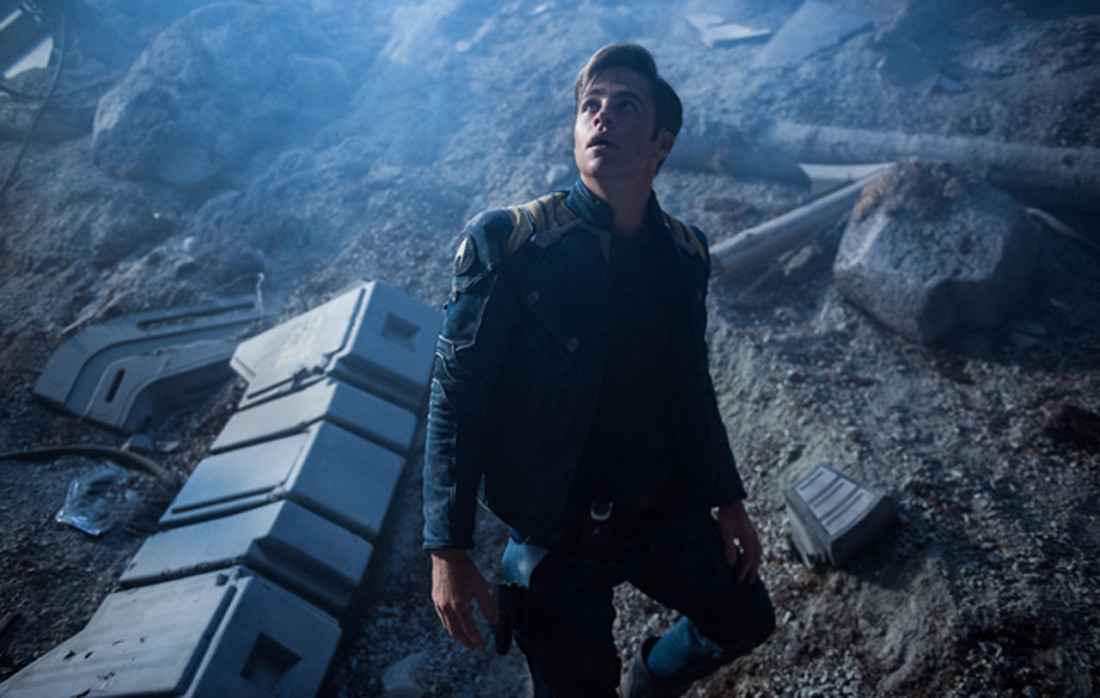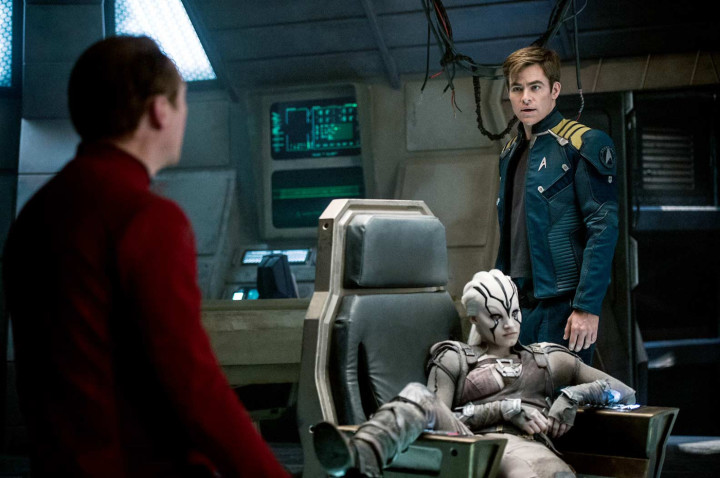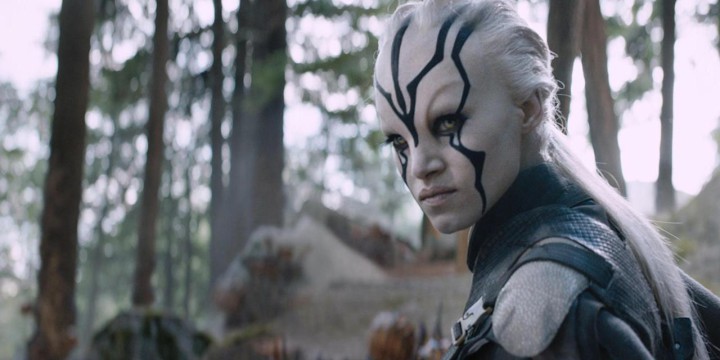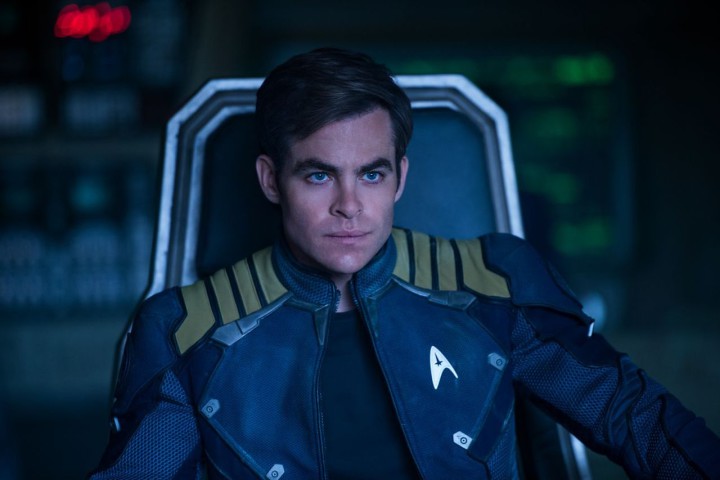Star Trek Beyond is the funnest entry in the current reboot of the Star Trek film franchise. This isn’t much of an accomplishment, unfortunately, especially after the sensory overload and self-importance of J.J. Abrams’ Star Trek Into Darkness (2013). I mean, this is a movie where the universe is saved by a Beastie Boys song (a pretty ridiculous scene ruined by the film’s trailer), perhaps the silliest thing I’ve seen in a movie all year.
In theory, at least, this is fun. With moments such as these, and with the franchise being taken over, at least briefly, by Fast & Furious director Justin Lin, there’s been some questioning as to whether or not this is even a “real” Star Trek movie. As someone who’s never seen any of the original movies, nor any of the numerous TV shows, and is obviously not entrenched or attached to the fandom of Star Trek, I can’t say one way or another. However, Star Trek Beyond definitely is a movie that fully embraces the newer cinematic tendencies set in place by Abrams — meaning more action and a plot that, once it kicks in, never sits still.
So, while Lin’s film is more lighthearted than Abrams’ takes on the property, it’s still an occasionally exhausting and often incomprehensible sci-fi action picture. Lin, whose Fast & Furious entries thrive on the same theory of far-fetchedness and nonsense, is a logical choice for an undertaking of this sort. But there are flaws within the foundation Abrams put in place, issues that this new film simply can’t overcome. Namely, the film has no iconography of its own, instead leaning heavily on nostalgia. I know who Captain Kirk (Chris Pine), Spock (Zachary Quinto) and company are because they’ve been entrenched in pop culture for decades now. Because of this, the film sees no reason to build on these characters within this specific film. What’s used as excuses for characterization are sketched in (Kirk’s daddy issues and general ennui, Spock’s grappling with his own mortality) and simply generalized, existing within the screenplay as little more than window dressing or things to mark off a checklist.
This is to be expected, of course, since Beyond exists solely as a summer blockbuster spectacle. Lin and company have removed the crew from their starship, the Enterprise, and placed them on a rugged planet controlled by the warlord Krall (Idris Elba in ten pounds of makeup), who’s bent on destroying the Federation. As the film’s big set pieces roll out, some work better than others. Kirk riding around on a motorcycle is pretty goofy, though the bits set inside the wrecked Enterprise, which play around with physical space and angles, work better conceptually (the film obviously works best when practical effects are in use). However, it’s impossible to consistently tell what, exactly, is going on in any of these scenes. It’s just a mishmash of confusion and incoherency, a huge problem when these types of scenes are three-fourths of your film. It’s enough to make your eyes glaze over, though the mindlessness of Star Trek Beyond is at least playful. Despite the glossy sheen Lin puts on such an expensive movie, this is disposable entertainment and nothing else. Rated PG-13 for sequences of sci-fi action and violence.
Playing at Carmike 10, Carolina Cinemark, Epic of Hendersonville, Grail Moviehouse, Regal Biltmore Grande, UA Beaucatcher.







OMG so you really have NO clue about Star Trek yet somehow feel qualified to review this film. Meaning of course that your copy is irrelevant to all those who have followed ST over the years. You can’t even compare this film w/the last one! Bravely going where you haven’t gone before doesn’t cut it. Fans are interested in whether this film gets back to the basics of Roddenberry’s vision (I think it does somewhat), how it stacks up next to the other two films in this latest series, as well as the whole 50 years history.
All of which you in your bubble simply can’t address intelligently.
I’m a Trekkie of the moderate variety and found the film to be a lot of fun in spite of the fact that the plot was pretty thin. I get it that Kirk has doubts about his career and life path which are resolved by his discovery that the other Captain “got lost”, but how and why that Captain became Krall was not very clear.
I did appreciate the nods to the series “Star Trek: Enterprise” (the design of the USS Franklin and the uniforms of its’ crew, the mention of the Zindi and the MACOs), which many Trekkies reject as a legitimate part of the canon.
So, yes, a thin, confusing plot mixed with moments of boldness. I found the overall film enjoyable, but I can see where non-Trekkie critics and hardcore Trekkies would disapprove, albeit for different reasons.